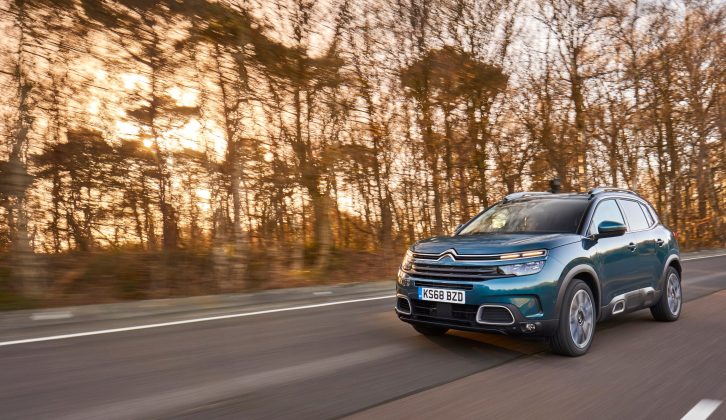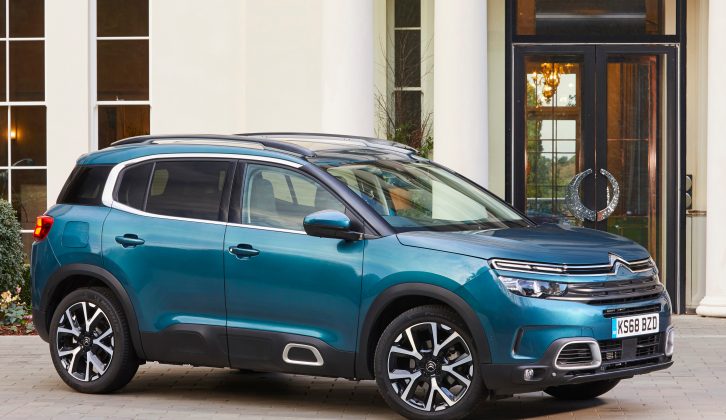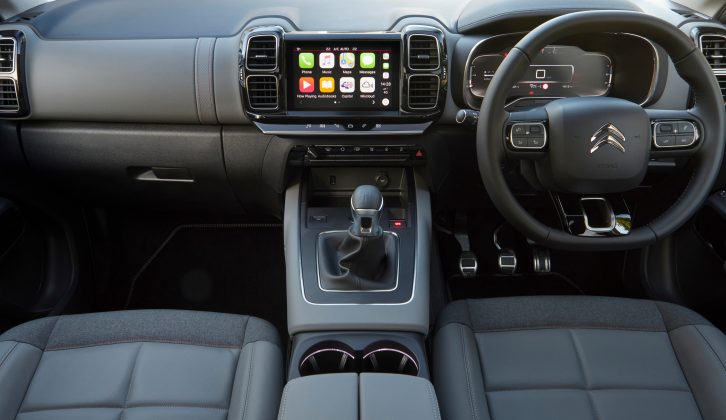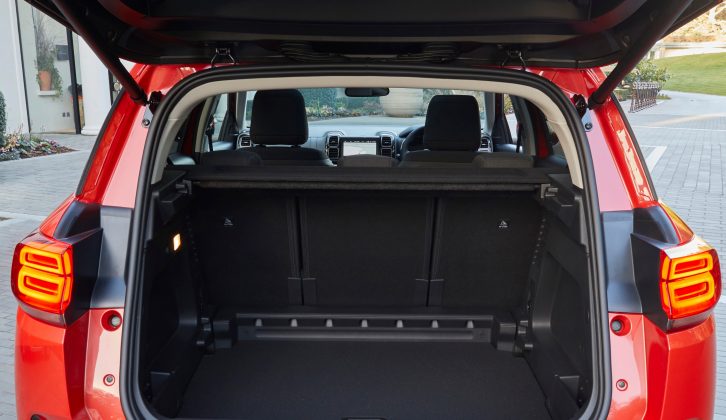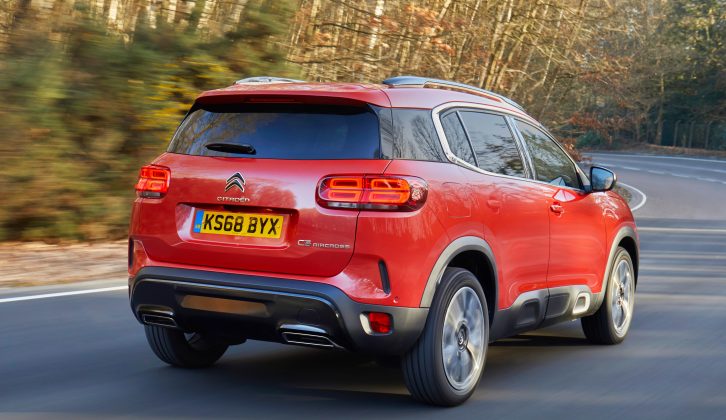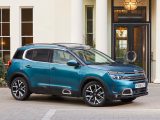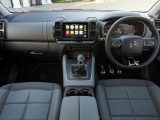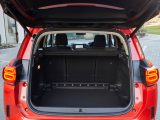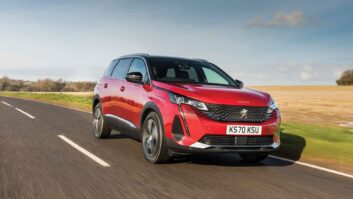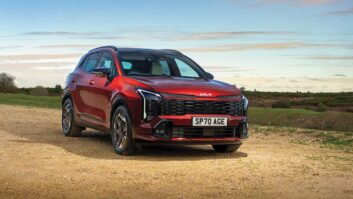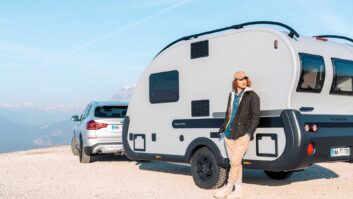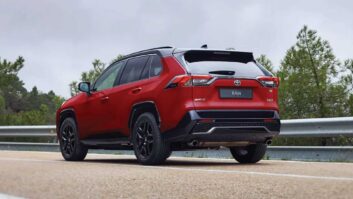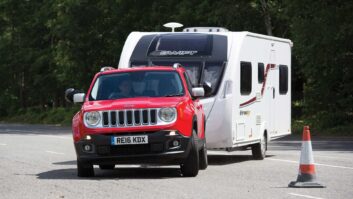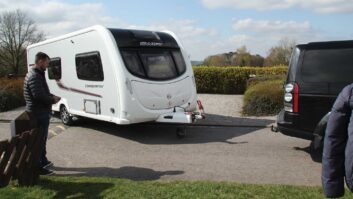It’s good to be different. That’s something Citroën has rediscovered in recent years, with a string of new models that look and drive with their own distinct character. It’s an approach that has paid off with improving sales at a time when much of the motor industry is struggling.
The new C5 Aircross is the latest example. It might compete with the Ford Kuga and Nissan Qashqai, but this isn’t just another me-too clone. The car looks bold and modern, and couldn’t be mistaken for anything other than a Citroën. That’s true of the interior, too, although the appealing style is let down here and there by hard and scratchy plastics.
Making comfort a priority
Citroën says its two priorities are design and comfort. You can judge the first for yourself, although we’d put a big tick in the box marked design. What about comfort? Well, Citroën has developed suspension with what it calls Progressive Hydraulic Cushions. These are said to slow down movements at the end of the suspension travel to prevent sudden jolts.
Think of it as a modern alternative to the plush hydropneumatic suspension of classic Citroëns like the DS.
Citroën says the Progressive Hydraulic Cushions ‘redefine comfort’, which is a bit over the top. It doesn’t quite match the hyperbole, but the C5 Aircross certainly rides far more serenely than a Kia Sportage or Mazda CX-5. It’s so refreshing for a brand to make no pretence towards sportiness and engineer a car for comfort above all else.
There’s more to this approach than the ingenious suspension. All but the entry-level model have Citroën’s Advanced Comfort Seats, with an extra 15mm of padding. We found them plush and finished our test drive with no hint of back ache.
Space matters
However, rear-seat space is modest considering the car’s size. Headroom in particular is tight, especially in cars with a panoramic sunroof. However, the three individual rear seats slide back and forth on runners and the back rests can be set to five different positions, giving this SUV the adaptability of an MPV.
What’s really impressive is the enormous boot. Even with the rear seats all the way back on their runners there’s a whopping 580 litres for bags. That’s far more than a Ford Kuga (406 litres), Nissan Qashqai (430 litres) or Kia Sportage (503 litres). With the rear seats all the way forward, the space increases to 720 litres.
Engine choices
Load up and head out on the road, and you can expect a peaceful journey. At speed, the C5 Aircross is quiet as well as comfortable. There’s little in the way of wind or road noise, and the engines we tried are quiet once cruising.
For regular driving, there’s little need to look beyond the excellent Puretech 130 petrol. It achieves 36.6-44.2mpg on the combined cycle. That might not sound all that impressive, but remember the official figures have now switched to the new, tougher WLTP test method. So in reality this is a very economical car by petrol standards. What’s more, it revs freely and punches above it’s modest 1.2-litre capacity.
The Puretech 130 has a legal towing limit of just 1350kg and the maximum download on the towball is a paltry 54kg. The kerbweight of 1479kg (including 75kg for the driver not included in Citroën’s published weight) gives an 85% match figure of 1257kg. So for a family SUV, the Puretech 130 can’t tow many family caravans. Regular caravanners will do better to look at one of the diesels instead.
The BlueHDi 180 should prove a much more capable tow car. It has 178bhp and 295lb ft of torque, and a 1615kg kerbweight. That gives an 85% match figure of 1373kg, well within the 1650kg legal towing limit. However, the maximum download on the towball is lower than most rivals at just 66kg.
In solo driving performance is plentiful, and given how much pulling power the engine has we can’t see it struggling with any sensibly matched caravan. What’s more, the eight-speed automatic gearbox (this model isn’t available with a manual) changes gear smoothly. The engine can sound strained when really put to work, though. The range-topping diesel auto achieves a WLTP combined figure of 42.3-47.1mpg depending on the exact specification.
If you want diesel power but prefer to change gear for yourself, you’ll have to choose the BLueHDi 130. Peak pulling power drops to 221lb ft, but that should still be enough to tow a well matched tourer given that the 1505kg kerbweight gives a modest 85% match figure of 1279kg. The kerbweight is the same whether you choose the manual or the auto.
The fourth engine option is a more powerful petrol, with 178bhp and 184lb ft of torque. However, it’s the thirstiest of the available engines, so wouldn’t be our first choice for towing.
Let’s talk pricing
The range starts from £23,225. That’s just a little more than the cheapest Ford Kuga (£23,060), and quite a chunk more than the most affordable Nissan Qashqai (£19,995).
However, although they are both five-seat family SUVs, the C5 Aircross is considerably bigger than the Qashqai. It’s well equipped, too. Even the entry-level car comes with extensive safety equipment, dual-zone climate control, rear parking sensors, a DAB radio, and smartphone compatibility.
How well will the C5 Aircross tow a caravan? Comfort-oriented suspension can feel short of control when towing, and some will be disappointed there are no 4×4 versions of Citroën’s SUV. It’s available with the Grip Control advanced traction control system instead. But the more powerful of the two diesels certainly feels strong enough for towing duties.
A solo test drive is no substitute for actually towing a caravan, so we’ve put in a request for a C5 Aircross to put through a full tow test. In the meantime, we can say for certain that the Citroën is a pleasingly different alternative to the established family SUVs.
What's really impressive is the enormous boot. Even with the rear seats all the way back on their runners there's a whopping 580 litres for bags
